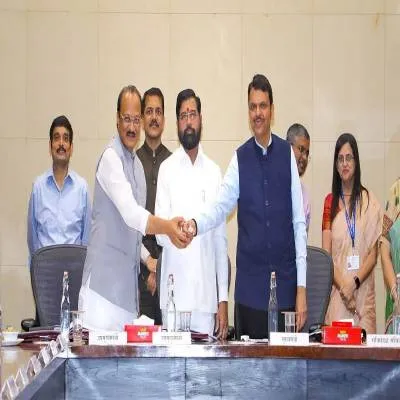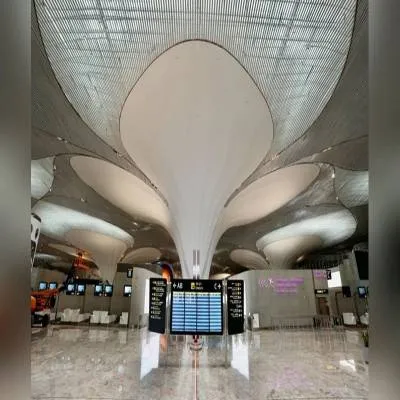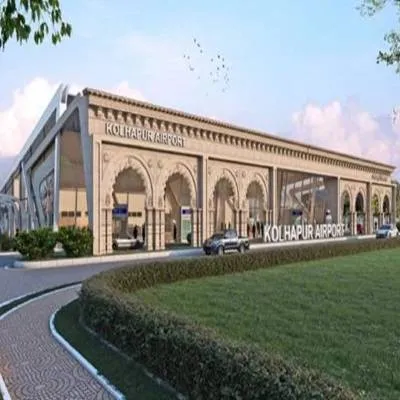Schedule a Call Back
Experts discuss metro rail at Infra-Nirbhar webinar

Metro-leaders
and analysts shared their experiences of building metro rail in various Indian
cities on Monday at ?Metro Vision?, a webinar under the Infra-Nirbhar webinar series organised by CW and Swarajya magazines. Urban affairs minister Hardeep Singh Puri delivered the keynote.
Metro as atmanirbhar. Before the panel discussion, in his Keynote Address, Union Minister of Housing and Urban Affairs Hardeep Singh Puri said that the government envisions 50 cities to get metro rail connection. Puri revealed that since the Narendra Modi government took over in 2014, 469 km of metro rail have been added, and now a total of 717 km is operational. With a major thrust on metro rail this Budget for several cities, the plan, Puri said, is to achieve 1,000 km of metro rail by next year, and 1,700 km by 2025.
Metro is a stellar example of Atmanirbhar, Puri said, adding that costs have considerably come down because of indigenisation?for example, rolling stock cost is cut significantly from Rs 12 crore to Rs 8 crore. Developing a seamless urban transit through NCMC, an intermodal transit card, is an immediate goal, Puri said.
Other speakers on the panel were:
Abhay Mishra, CEO & MD, Mumbai Metro One
Nalin J
Gupta, MD, J Kumar Infraprojects
Pradeep
Yadav IAS, Managing Director, Chennai Metro Rail
Surjit
Madan, Head-Rail Systems, Amaravati Metro Rail
Aashish
Chandorkar, Columnist and Writer, and Pratap Padode, Editor-in-Chief,
Construction World, moderated the session.
Ridership, delays, costs. The primacy accorded to metro rail in the current Union Budget was not lost on the panel, as Nalin Gupta of J Kumar Infraprojects spotlighted?Gupta estimated that the next 15 years will witness ?huge order books and execution? in the metro rail segment of urban infrastructure.
Sharing success stories and learning experiences in the initial phases of building metro rail in Mumbai and Chennai, Abhay Mishra, CEO and MD of Mumbai Metro One, reflected on the initial uncertainties that surrounded ridership. Would the Mumbaikar, accustomed to the efficiency of local trains, adopt metro rail? Mishra pointed out that happily, the growth is now ?in double digits?, and that Mumbai Metro?s ridership has evolved so well that one of the metro reaches now figures as the seventh most patronised in the world.
On the other hand, ridership continues to be an issue in Chennai. Pradeep Yadav, the MD of Chennai Metro Rail, said that the efficiency of the city bus services, coupled with low fares, has proved to be metro rail?s big ridership challenge. Yadav said there were many learnings from the first phase of the project, especially in terms of time overruns. But the second phase of 118 km slated to be completed by 2019 may be a different experience.
?We hired
design consultants well in advance of the project?18 months before,? Yadav said.
?Because the design is already in place, we do not expect delays on that front.
Land acquisition [a big cause of delays in urban infrastructure projects]
issues have also been addressed at that stage itself. The contractor will
therefore need to only focus on construction without having to struggle with
land acquisition or design issues.?
On
cost-cutting measures to ensure there are no cost overruns, Yadav said, Chennai
Metro has taken steps to reduce costs through changes in design?bringing it up by
one-third. On the other hand, to be technically failsafe, geo-technical
investigation is being conducted at every 250 m rather than the normal 500 m.
Another
cost-cutter that Chennai Metro has decided to employ is pre-fabrication where
possible. Pre-cast technology cuts costs, but is also preferred especially in
urban infrastructure because it reduces disturbance and noise pollution in
residential and commercial neighbourhoods.
Gupta pointed
out that PPP?s tryst with metro rail has not exactly been superlative. ?Metro
is essentially an EPC job,? Gupta said. ?The difference between govt and
private implementation is efficiency in land acquisition, utility-shifting,
tree-felling, ROW, and other permissions?the very reasons for delays in metro
rail.?
He
suggested that metro rail could borrow a leaf out of NHAI?s book, stipulating,
for example, that 90% land acquisition be completed before the project
commences.
Jobs per sq km. Madhav Pai, Executive Director at sustainable
cities policy research firm WRI India Ross Center, believes discussions around
metro rail in India has been rather technical, and that cities need to start
thinking of metro rail as investment, thinking of how economy around metro
corridor will develop. Development and job creation go hand-in-hand, Pai
pointed out, adding that a good way to think about this relationship is to
boost jobs per sq km around metro rail will be an attractive way to think about
metro rail. For example, New York has 200,000 jobs per sq km. But Indian cities
may not match up?despite a greater density in population. Mumbai may have
30,000-40,000. Other metro cities like Chennai, Delhi and Bengaluru may have as
low a figure as 10,000.
While
agreeing with Pai, Mishra pointed out beyond
real estate around metro rail
stations, space within metro stations
can be rewarding. They have retail space that we plan to commercialise. The
rates per square foot in those spaces have shot up, Mishra observed. Yadav, on
the other hand, said that increasing ridership will remain the priority,
although RFPs have been sought for real estate use, and some good response has
ensued.
Lite, Neo, or big metro rail? The new technological adaptation in metro rail is the ?lighter? version of metro rail that is cost-effective and suitable for cities with lower footfalls. Visakhapatnam, for example, has conducted a comprehensive mobility plan for estimated ridership for 30 years. The requirement in that tier-2 city is about 25,000, Surjit Madan, Head of Rail Systems, Amaravathi Metro Rail, said. Hence the option of going for Metro Lite, the rubber tyre-based system.
The webinar was sponsored by J Kumar Infraprojects.
Click HERE to register for the FREE Infra-Nirbhar webinar series.


Subscribe Now
Subscribe to our Newsletter & Stay updated
RECENT POSTS
Popular Tags
Folliow us
Related Stories
Amara Raja Posts 8% Revenue Rise in Q2 FY26
Amara Raja Energy & Mobility reported an 8 per cent rise in revenue for Q2 FY26, supported by strong OEM demand in the four-wheeler and two-whe...









